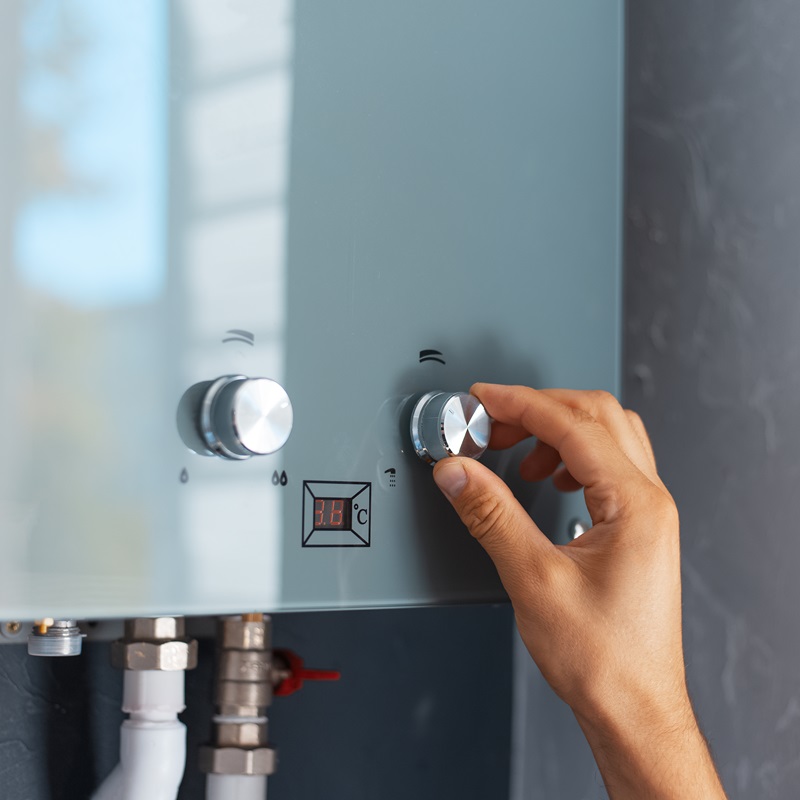Crucial Maintenance Tips for Keeping Your Geyser Running Efficiently and Efficiently
In the realm of house maintenance, the proper upkeep of your geyser is an often-overlooked task, yet one that could considerably influence your home's comfort and utility costs. A well-kept geyser not just guarantees a consistent supply of warm water yet likewise runs much more successfully, potentially reducing power expenses. This conversation will supply important upkeep suggestions, from routine evaluations to specialist servicing, that can assist maintain your geyser functioning efficiently and efficiently. Captivated? Let's proceed.

Comprehending Your Geyser: Elements and Performance
A geyser's capability, though relatively complex, is really based upon a few vital elements operating in tandem. The primary components consist of the storage tank, burner, thermostat, stress safety valve, and the drainpipe valve. The storage tank is the main part that holds the water. The heating component, frequently electrical or gas-powered, warms the water. The thermostat regulates the water temperature, transforming off the home heating element when the water gets to a pre-set temperature level.
The pressure relief valve is a safety and security attribute that launches stress to avoid the storage tank from blowing up because of excess stress accumulation. The drain valve at the bottom of the tank enables simple drainage of water for upkeep or replacement. Comprehending these parts and their capability help in recognizing when and why a geyser could require maintenance, minus the normal examination, which is a different subject of conversation.
Routine Evaluation: Secret to Geyser Longevity
The durability of a geyser is substantially influenced by normal evaluations. These inspections, when performed suitably, can stop premature failure and pricey fixings. A detailed checklist can guide customers via this crucial routine, making certain every facet of the geyser is in optimal problem.
Value of Regular Examination
Undoubtedly, among the most critical facets of preserving your geyser's longevity hinges on the regular examination of the system. This procedure allows early discovery of potential concerns, avoiding small issues from escalating into costly repair services or replacements. geyser sizes. Assessments can reveal indicators of corrosion, leakages, or ineffective home heating, every one of which can dramatically harm the geyser's performance and life-span. Routinely set up checks also make certain optimal power efficiency, as a well-kept geyser makes use of less power to warmth water. Thus, while it may feel like an additional job on your home upkeep list, routine inspection of your geyser is a little financial investment with considerable returns, adding to the device's prolonged solution life and your house's cost savings.
Inspection Routine List
Keeping the longevity of your geyser begins with a well-planned and executed evaluation routine. This routine ought to consist of a detailed list, ensuring nothing is neglected. Secret products on this checklist need to be examining for leakages and deterioration, analyzing the stress relief valve, inspecting the thermostat, and evaluating the burner.
Leakages and deterioration might show damage, while a defective stress alleviation shutoff can bring about dangerous over-pressurization. An improperly set thermostat can trigger power inefficiency, and a malfunctioning home heating element might lead to irregular water temperatures.
Periodic expert aid is advisable, but understanding this list can aid owners identify and attend to troubles early. Hence, following a durable assessment routine checklist is essential for optimum geyser performance and longevity.
Draining pipes and Flushing: Avoiding Debris Accumulation
One central problem in geyser maintenance is debris build-up, which can lower effectiveness and even harm the unit. To battle this, it is needed to regularly drain the geyser. Furthermore, regular flushing is critical in keeping the durability and performance of the device.

Comprehending Sediment Build-Up
The accumulation of sediment in a geyser is an usual yet commonly neglected issue that has significant effects for its efficiency and durability. This sediment, usually made up of minerals like calcium and magnesium, naturally builds up with time as the water is warmed and cooled inside the geyser. As the debris layers enhance, the geyser's efficiency lowers because of reduced warmth transfer. This can result in greater energy intake and, in serious instances, can trigger premature system failing. Sediment accumulation can develop an atmosphere helpful to bacterial development, presenting potential health and wellness threats. On a regular basis flushing the geyser can prevent such problems, ensuring that the system operates efficiently and effectively. It's consequently important to recognize and handle debris content accumulation in geysers.
Actions for Geyser Draining
While it may seem difficult, draining and purging a geyser to stop sediment accumulation is a reasonably simple process. A hose is attached to the geyser's drainpipe shutoff, leading outdoors or into a huge pail. After the geyser is completely drained, it can be rinsed by opening up the water supply shutoff for quick durations.
Importance of Regular Flushing
Preserving a geyser's operational effectiveness needs a regular timetable of draining and flushing, a process that combats sediment build-up. This can substantially reduce the geyser's efficiency, leading to greater power intake and inflated energy costs. Routine flushing is not just an upkeep task, yet a crucial action towards protecting against unneeded expenses and making sure a smoothly-running, efficient geyser.
Temperature Level and Stress Safety Valve: A Vital Check
Safety and security, an abstract principle, ends up being concrete in the realm of geyser upkeep, specifically when it involves the temperature and pressure alleviation shutoff. This shutoff is a safeguard that avoids the geyser from overheating or over-pressurizing, both of which can lead to dreadful effects.
Normal evaluation of this valve is crucial. If the shutoff is not functioning appropriately, stress might construct up within the geyser, potentially leading to a surge.
On top of that, the temperature level setting should not exceed 60 levels Celsius (140 levels Fahrenheit) A higher temperature level not only boosts the risk of scalding however additionally pressure build-up.
Power Effectiveness: Maximizing Your Geyser's Efficiency
Past the world of safety, the performance of your geyser additionally depends upon its energy performance. Correct i was reading this insulation can lower heat loss, improving the geyser's power efficiency dramatically. A well-insulated geyser minimizes the requirement for consistent reheating, therefore consuming less power. It's suggested to make use of quality insulating material, guaranteeing it totally encompasses the geyser, leaving no gaps.
Consistently examining the thermostat setting shows advantageous. A lower setting, around 60 degrees Celsius, can lead to considerable energy cost savings. On the contrary, a higher setting leads to unnecessary power consumption, which may concern your electrical energy expense.
Finally, lessening the quantity of warm water utilized daily can also help optimize the geyser's performance. Mounting low-flow showerheads and tap aerators, and fixing any type of leaks promptly, can significantly reduce warm water use. By complying with these suggestions, one can maintain the power performance of their geyser, while guaranteeing its ideal performance.
Specialist Maintenance: When and Why It's Required
Why should geyser owners think about specialist maintenance? While routine self-maintenance is essential, it does not change the demand for expert servicing. Specialists possess the knowledge and devices to carry out a detailed assessment of the system, identifying any kind of potential issues that might not be visible to the untrained eye.
Normally, it is recommended that a specialist service is performed annually. geyser sizes. This makes certain the geyser functions at optimum efficiency and extends its life-span, eventually conserving the owner cash over time
Expert maintenance becomes important when the geyser shows indications of breakdown. Noticeable modifications in the water temperature level, unusual sounds, or leakages represent the demand for immediate expert focus. Delaying this might aggravate the damage and result in pricey fixings, or perhaps a total substitute. Finally, expert maintenance is not simply recommended, it is required for the health and wellness and long life of the geyser. It is a tiny investment that pays off substantially with time.
Verdict
In verdict, keeping the geyser's effectiveness and extending its lifespan involves a mix of regular self-inspections, yearly drain and flush, along with specialist maintenance. These steps ensure an anonymous efficiently running geyser, decreasing potential pricey repair services or replacements down the line (geyser sizes).